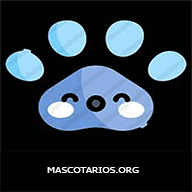The Aidi is highly energetic, protective and extremely vigilant. Despite its resemblance to Sheepdogs, The Aidi is not one of them because there are no sheepdogs from the Atlas.
02 – group II
▷ The world of Pets: Dogs, cats, birds, reptiles, amphibians
Aidi – Atlas Mountain Dog
▷ The world of Pets: Dogs, cats, birds, reptiles, amphibians
Affenpinscher  FCI 186 - Pinscher and schnauzer type
FCI 186 - Pinscher and schnauzer type
Content |
|---|
Characteristics "Affenpinscher"
Coexistence is important that you have with your new friend. Before considering the acquisition of a dog of the breed "Affenpinscher" you know certain factors. Not all breeds of dogs are apt to live in an apartment, you must take into account his character, their need for exercise, their interaction with other pets, their care and if you have small children, their level of tolerance towards them.
Adaptation ⓘ5.0 out of 5 stars (based on 1 review)
|
friendly dog ⓘ3.0 out of 5 stars (based on 1 review)
|
hair loss ⓘ2.0 out of 5 stars (based on 1 review)
|
|---|---|---|
Affection level ⓘ5.0 out of 5 stars (based on 1 review)
|
Need for exercise ⓘ3.0 out of 5 stars (based on 1 review)
|
Social need ⓘ5.0 out of 5 stars (based on 1 review)
|
Home ⓘ5.0 out of 5 stars (based on 1 review)
|
Toilet ⓘ3.0 out of 5 stars (based on 1 review)
|
Friendly with strangers ⓘ3.0 out of 5 stars (based on 1 review)
|
barking ⓘ3.0 out of 5 stars (based on 1 review)
|
Health ⓘ3.0 out of 5 stars (based on 1 review)
|
Territorial ⓘ5.0 out of 5 stars (based on 1 review)
|
Cat friendly ⓘ3.0 out of 5 stars (based on 1 review)
|
Intelligence ⓘ4.0 out of 5 stars (based on 1 review)
|
Versatility ⓘ3.0 out of 5 stars (based on 1 review)
|
Child friendly ⓘ1.0 out of 5 stars (based on 1 review)
|
Surveillance ⓘ4.0 out of 5 stars (based on 1 review)
|
joy ⓘ5.0 out of 5 stars (based on 1 review)
|
Affenpinscher History
Type dogs Affenpinscher They are known since about 1600, years. At that time, they were somewhat bigger. Images Affenpinscher set in sixteenth-century German paintings
It's name derives from the German Affe (monkey). The race is ancient and prior to the Griffon Bruxellois and Miniature Schnauzer.
The race was created to be a buzzard, working to eliminate rodents from kitchens, barns and stables.
The first draft of the standard is from 1908 and it is not until the year 1913 when the first official standard is recognized.
Did you know??Sometime in the 18th or early 19th century, someone had the brilliant idea to raise the Affenpinscher in reduced size, allowing him to become a popular pet by becoming a companion to the ladies.
Physical Characteristics of the Affenpinscher
One Affenpinscher, generally, weights from 2,9 to 6,0 kg and measures of 23 to 30 centimeters tall. It has hard and rough hair, which make him look like a monkey (hence its name, because Affe means monkey in german). Its coat is coarse on the head and shoulders forming a mane, with a lower layer on the front and rear quarters.
The FCI and KC of breed standards, specifies that the layer of hair should be black, but the AKC also allows other colors like gray, Silver, black and tan, and beige (a mixture of Brown, black and white red hairs); other clubs have their own lists of acceptable colors, but black is preferential.
Character and skills
They have a character other than what we associate with Terrier. They differ from Terrier how they tend to get along with other dogs and pets. They are active, adventurous, curious and stubborns, but also cheerful and playful. Because they are affectionates with the family members, the protection is a must to whom they love. It is necessary that, they have a clear education, coherent, if not, you can be very difficult. The training must be varied because the dog can get bored easily.
The Affenpinschers they are somewhat territorial when it comes to their toys and food, That's the reason they are not recommended for younger children. This dog is very quiet, but it can become very aggressive if it feels attacked or threatened and does not show fear towards any aggressor.
Their life expectancy is around twelve years , is a typical life cycle of a purebred dog, but slightly shorter than most breeds its size.
Observations
During moulting it lost much hair, so it is advisable to a good brushed daily and a good diet. The better the quality of the best food will be the State of the fur of your dog. A diet low in fat, salts, iodine, Vitamin B, will result in dryness and hair loss.
The Affenpinscher it is a delicate dog that often suffers from intestinal problems.
Affenpinscher Health
All dogs have the potential to develop genetic health problems, just as all people have the potential to inherit a particular disease. Run, do not walk, from any breeder that does not offer a health guarantee on puppies, to tell you that the breed is 100 percent healthy and has no known problems, or tell you that your puppies are isolated from the main part of the home for health reasons. A reputable breeder will be honest and open about the breed's health problems and the incidence with which they occur in their lines..
The monkeys it is a fairly healthy small breed, but individual dogs can develop orthopedic problems like dislocated kneecaps, a common knee condition in small dogs. Affen are also prone to skin conditions that can lead to flank hair loss..
Not all of these conditions are detectable on a growing puppy, and it is impossible to predict if an animal will be free of these diseases, so you must find a trusted breeder who is committed to raising the healthiest animals possible. Must be able to produce independent certification that the dog's parents (and grandparents, etc.) have been examined for common defects and considered healthy for breeding. That's where health records come in..
Don't fall for the lies of a bad breeder. If the breeder tells you that you do not need to do these tests because you have never had problems in your lines, their dogs have been “reviewed by the veterinarian”, or any of the other excuses bad breeders give for skimping on genetic testing of their dogs, leave immediately.
Careful breeders screen their breeding dogs for genetic diseases and breed only the healthiest, best-looking specimens., but sometimes Mother Nature has other ideas and a puppy develops one of these diseases despite good husbandry practices. Advances in veterinary medicine mean that in most cases dogs can still live a good life. If you are going to have a puppy, ask the breeder about the ages of the dogs in their lines and what they died of.
Remember that after you have welcomed a new puppy into your home, has the power to protect you from one of the most common health problems: the obesity. Keep a Affenpinscher with a proper weight is one of the easiest ways to prolong your life. Make the most of your preventive skills to help ensure a healthier dog for life.
Affenpinscher care
The Affenpinscher has a wiry coat that can be rough or smooth, but the words “smooth” and “rough” can be misleading. Rough-coated dogs have slightly softer textured hair and a heavier coat.. Some Affen they have fur that falls somewhere in between. Whatever type of coat you have, the typical monkeys looks clean but a little hairy. You can be sure it will have leaves and twigs in its fur after being outdoors., so you need regular grooming to maintain your appearance.
The tools you will need are a brush, a stainless steel comb, a cutter, blunt-ended scissors and scissors to reduce thickness. Remove dead hairs, call “peel” the coat, is part of the package when you live with a monkeys.
The rest is basic care. Trim nails as needed, usually every few weeks. Small breeds are prone to periodontal disease, so brush your teeth often for general good health and fresh breath.
Questions about the dog breed “Affenpinscher”
-
How long does an Affenpinscher live??
Affenpinschers generally live off 12 to 14 years.
-
How much does an Affenpinscher puppy cost??
The price of an Affenpinscher puppy can vary depending on the place and the quality of the kennel., but on average, can cost between 1500 and 3000 EUR.
-
Are Affenpinschers good companion dogs??
Yes, Affenpinschers make excellent companion dogs due to their loyalty, affection and lively personality.
-
Are Affenpinschers easy to train?
Although they are smart, Affenpinschers can be stubborn and difficult to train. Early socialization and consistent training are important.
-
Do Affenpinschers need a lot of exercise??
Although they are not as active as some larger breeds, Affenpinschers still need a moderate amount of daily exercise to stay healthy and happy.
-
Are Affenpinschers hypoallergenic dogs??
No, Affenpinschers are not considered hypoallergenic. They still produce dandruff and hair, which can trigger allergies in some people.
-
Are Affenpinschers aggressive dogs??
They are not naturally aggressive, but they can show territorial and defense behaviors. Proper socialization and training are important to prevent any aggression.
-
Are Affenpinschers good with children??
Yes, Affenpinschers can be good with children as long as they are properly socialized from an early age and taught to safely interact with children.
-
Do Affenpinschers lose a lot of hair??
No, Affenpinschers don't shed as much hair as some other breeds, but they still need regular coat care.
-
Do Affenpinschers need to be shaved or clipped?
It is not necessary to shave or cut the coat of an Affenpinscher, but they do need regular coat grooming to keep it clean and tangle free.
-
Are Affenpinschers prone to health problems??
like any breed of dog, Affenpinschers can be prone to certain health problems, such as eye and heart problems. It is important to buy a puppy from a responsible breeder who performs health tests on their dogs..
-
Are Affenpinschers good apartment dogs??
Yes, Affenpinschers can adapt well to apartment life as long as they get plenty of daily exercise and are properly socialized.
-
Do Affenpinschers bark a lot??
Yes, Affenpinschers can be vocal and bark quite a bit. Obedience training and early socialization are important to prevent excessively noisy behaviors.
-
Do Affenpinschers need special coat care??
Yes, Affenpinschers need regular coat grooming to keep it clean and tangle free. This includes brushing their rough, rough coat at least twice a week and trimming their fur around their eyes and mouth to prevent irritation..
-
Do Affenpinschers get along with other dogs and pets??
Affenpinschers can be territorial and wary of other dogs and pets., so early socialization and gradual introduction are important to establish positive relationships with other animals. But, with proper socialization, they can get along with other dogs and pets in the household.
-
Are Affenpinschers a suitable breed for first time owners??
Affenpinschers can be a good choice for first-time owners if they are willing to put the time and effort into their training and socialization.. But, due to his stubborn and energetic personality, may not be the best choice for all first-time owners. It is important to do your research on the breed and speak to a breeder or dog professional before making a decision..
Affenpinscher pictures
Affenpinscher Videos
Breeders list "Affenpinscher"
In Spain we have not been able to contact any breeder of “Affenpinscher”. There are very few international breeders who maintain this wonderful breed that was on the verge of extinction..
Type and recognitions:
- FCI CLASSIFICATION:
- Group :
- Section : . .
Federations:
- – FCI – Pinscher and Schanuezer dogs. Molossian type Dogs and Swiss Mountain and Cattle Dogs. , Section 1: Pinscher and Schnauzer. ⓘ
- – AKC – Toy ⓘ
- – ANKC – Group 1 (Toys) ⓘ
- – CKC – Group 5 – Toys ⓘ
- – KC – Toy ⓘ
- – NZKC – Toy ⓘ
- – UKC – companion breed ⓘ
FCI breed standard "Affenpinscher"
Alternative names:
1. Affen, Affie, Monkey Dog (English).
2. Affenpinscher (French).
3. Affenpinscher (German).
4. Affenpinscher (Portuguese).
5. Perro Mono, Affenpinscher (español).
▷ The world of Pets: Dogs, cats, birds, reptiles, amphibians
Majorca Mastiff (Majorcan mastiff dog)  FCI 249 - Molossoid - Dogo
FCI 249 - Molossoid - Dogo
The Majorca Mastiff is a gentle dog, extremely affectionate with their owners, faithful to his master
Content |
|---|
Characteristics "Majorca Mastiff (Majorcan mastiff dog)"
Coexistence is important that you have with your new friend. Before considering the acquisition of a dog of the breed "Majorca Mastiff (Majorcan mastiff dog)" you know certain factors. Not all breeds of dogs are apt to live in an apartment, you must take into account his character, their need for exercise, their interaction with other pets, their care and if you have small children, their level of tolerance towards them.
Adaptation ⓘ5.0 out of 5 stars (based on 1 review)
|
friendly dog ⓘ2.0 out of 5 stars (based on 1 review)
|
hair loss ⓘ3.0 out of 5 stars (based on 1 review)
|
|---|---|---|
Affection level ⓘ2.0 out of 5 stars (based on 1 review)
|
Need for exercise ⓘ4.0 out of 5 stars (based on 1 review)
|
Social need ⓘ2.0 out of 5 stars (based on 1 review)
|
Home ⓘ3.0 out of 5 stars (based on 1 review)
|
Toilet ⓘ2.0 out of 5 stars (based on 1 review)
|
Friendly with strangers ⓘ3.0 out of 5 stars (based on 1 review)
|
barking ⓘ3.0 out of 5 stars (based on 1 review)
|
Health ⓘ3.0 out of 5 stars (based on 1 review)
|
Territorial ⓘ5.0 out of 5 stars (based on 1 review)
|
Cat friendly ⓘ2.0 out of 5 stars (based on 1 review)
|
Intelligence ⓘ4.0 out of 5 stars (based on 1 review)
|
Versatility ⓘ3.0 out of 5 stars (based on 1 review)
|
Child friendly ⓘ4.0 out of 5 stars (based on 1 review)
|
Surveillance ⓘ5.0 out of 5 stars (based on 1 review)
|
joy ⓘ4.0 out of 5 stars (based on 1 review)
|
History
The Majorcan mastiff dog, also known as Majorca Mastiff in Catalan or Perro de presa mallorquín in Spanish, is a fairly old dog whose history remains unclear.
It is believed to have originated from a number of races, especially the Spanish Mastiff and the Alano, that crossed over the centuries.
The result of these crosses came to Mallorca in the thirteenth century, specifically in 1229, during the conquest of the island by King James I of Aragon. Some of these dogs remained there and were bred with local dogs.. The resulting individuals turned out to be much less sensitive to heat and adapted very well to local conditions. They began to be used by the local population to monitor houses and livestock.
It was also in the thirteenth century when the butchers of the island found in the dog an assistant for his ability to control livestock, especially bulls, before and during their sacrifice. In fact, his powerful jaw made him able to keep them immobile by holding them firmly by the nose.
At the same time, it was also used by the Knights of Malta in battle and to guard the camps. It also, he was unrivaled in his ability to breach enemy camps, which greatly facilitated the assaults.
In 1713 the Treaties of Utrecht are ratified, which put the island of Mallorca under British rule. The English then introduced their own guard and fighting dogs in the Balearic Islands. Mallorcan dogs were bred with the Bulldog, and the result of these crosses was called “Majorca Mastiff”, which is a translation of the English word “Bulldog” (“bull” means bull) in Catalan. This name reflects the main use given to it. In fact, at the beginning of the 18th century, the bull-baiting, show in which a pack of dogs had to kill a bull, it was widespread and very popular in England, and the English did not stop importing it to Mallorca.
The Majorca Mastiff they also began to hunt wild boar and deer. It was also used for many years as a watchdog on ships, especially in case of pirate attacks, and sometimes you ate when there was nothing to eat.
Following the ban on bull hunting in 1835, was limited to two main functions: watchdog and hunter.
An eventful twentieth century
In the early 20th century, the Majorcan mastiff dog became better known. The first written record of the breed dates from 1907.
In 1923, the first representative of the breed was inscribed in the Spanish studbook. One year later, in Barcelona, made his first appearance at a dog show.
But, its development was greatly hampered by the famines of the decades of 1920 and 1930. Then, like many other breeds, was affected by World War II. Its population declined considerably throughout the period.
However, in 1946 a breed standard was developed, but it was not recognized by the International Cynological Federation (FCI) until about twenty years later, in 1963. But, by then there were probably no more left Majorca Mastiff pure. It also, the interest of breeders and individuals had largely shifted to other breeds that were expanding rapidly at the time, as the Great Dane, the German Shepherd and the Rottweiler.
In the Decade of 1980, the Majorca Mastiff, as it was known after the war, actually ceased to exist, especially due to the numerous crosses with Mallorcan sheepdogs (Ca de Bestiar). The latter came from the same region as the Majorca Mastiff and they brought their brindle coat. But, these unions substantially modified the characteristics of the Majorca Mastiff, so that it gradually moved away from the description given in the official standard.
But, passionate and determined breeders tried to save the breed and ensure that it kept the characteristics as close as possible to the registered standard. They set out to find individuals as close as possible to their ancestors. Two specimens called Tito and Anastasia (father and daughter, respectively), who were the first individuals considered sufficiently similar to the Majorca Mastiff of yesteryear. Its union and crossing with other crossed dogs on the island helped to resurrect the breed from a solid base. But, the number of breeders is still very low and the breed remains confidential. The specimens obtained did not leave the island and were reserved for the national market., where they were highly coveted for dogfighting.
In 1992 dogfighting was banned in the Balearic Islands, and it was then that the breed began to be exported slowly. The opening to the international market also allowed the introduction of new breeders in the lines, in order to expand the genetic heritage of the breed; they were both subjects of unknown origin with physical traits similar to the race, as hybrids of Majorcan mastiff dog.
These exports gave rise to numerous hatcheries in a wide variety of countries., where the Majorca Mastiff It is used both as a companion dog and as a guard dog.. In fact, it can be said that it was the export of the breed that almost saved it, since in Mallorca itself it is now only present in very limited numbers.
The recognition and popularity of the “Majorcan mastiff dog”
In the last decades, the reputation of the Majorcan mastiff dog has increased and their number has grown in many countries, but there is still a long way to go. In fact, its recognition by the main canine organizations in the world is still very partial, which obviously limits its visibility and dissemination.
In France, in the first decade of the twenty-first century, went from a handful of records a year to about fifty, and then the number skyrocketed in a few years, until exceeding 200 annual births in 2014. Since then, has hovered around this value.
Further east, countries such as Poland and Russia have welcomed a good number of representatives of the breed since the beginning of its international spread. Some even claim that over the years 90 there were more than 2.000 Majorca Mastiff only in the city of Moscow. This is likely to be unfounded, but the fact is that it was quickly appreciated there, and still appreciated.
It is also especially popular in Puerto Rico, where there is a prestigious locally developed lineage, which was created from the Spanish champion Chimo and other quality specimens that were sent there.
There are also several representatives of the breed in Holland, Denmark, Finland and Sweden. But, this is still quite embryonic, as evidenced by the low number of breedings in these countries.
In United States, the Majorcan mastiff dog It was recognized in 2006 by the United Kennel Club (UKC). But, the other reference organization in the country, the American Kennel Club (AKC), has not yet taken the step. Further north, the Canadian Kennel Club (CKC) he doesn't recognize it either. In fact, in North America, both the reputation of the breed and its diffusion are still very low.
In the United Kingdom, where it was introduced in 2001, it is also not recognized by the prestigious Kennel Club (KC).
In Spain, not only on the island of Mallorca the Majorca Mastiff is discreet. In fact, the Royal Canine Society of Spain (RSCE), the main canine organization in the country, received less than 50 enrollment requests per year to mid-year 2010, figure that was even reduced to less than 20 at the end of the decade.
Physical characteristics
He has a bulky head, solid and the skull is wide. The eyes are oval and somewhat oblique; in the color, the more dark best. The ears are short and played backwards. The body is a massif with included belly. The forelimbs are strong and the tail reaches to the Hock. The coat is short and rough.
The favorite colors in your order are: the striped, the Fawn and black. In the striped prefer the dark tones in the leonados the intense nuances. The white spots are admitted in the previous members, chest and tolerated up to a maximum of 30 % the surface of the body. The black mask is also supported.
The Ca de Bou or Majorcan Dogo, It is a dog reserved and suspicious with strangers. It has an extraordinary adaptation, but it is not a dog to place in any hand. Their education and socialization should be initiated as soon as possible because the breed is naturally dominant.
The care of the fur is a simple weekly brushing and a regular cleaning of the ears and eyes. It is a rustic dog that adapts well to changes in temperature and withstands inclement weather well..
Character and skills
Although the Majorca Mastiff it has been used in its history for quite violent tasks, like bull hunting, the slaughter of bulls or the fighting of dogs, he is surprisingly very affectionate and has an excellent temperament. In fact, tends to create a very strong bond with his family.
They will do anything to protect their family and are very good watchdogs.. In fact, has a strong protective instinct and is very suspicious of strangers. But, although it can be impressive and dissuasive when needed, he only shows aggression when he feels his family is in danger. On the other hand, when dealing with people you don't know, he is always cautious, but he refers to his teacher to determine whether or not they are to be trusted. If the landlord invites someone you don't know to the house, will normally keep distance, but will not intervene in an untimely or even aggressive way. However, good socialization is necessary from an early age to avoid excessive distrust of all strangers.
Fits well with children, with whom he is patient and kind. He is even-tempered and likes spending time playing with them as much as being quiet on the couch. But, as with any dog ​​of any breed, should never be left alone with a young child without adult supervision. This is especially true because it is relatively heavy and can easily push or knock over a young child..
On the other hand, the Majorca Mastiff tends to get along very well with other dogs, both with those who share their home and with those who are on a walk. But, if the dog is a male and is in the presence of another male with a dominant temperament, a rivalry relationship may develop. So, it is better to avoid this type of coexistence and to take precautions to avoid any fight when you meet other dogs, in particular doing gradual introductions.
As they don't have a strong hunting instinct, his relationships with small animals, as cats, rodents or birds, they are usually quiet. If you have to live with them on a daily basis, the ideal is to present them as soon as possible, but his great sociability makes it possible to integrate newcomers into his house even if he has always been the only animal.
Perhaps because it has been used to being used in so many ways and in so many different environments throughout its history., the Majorcan mastiff dog is generally very adaptable, so much so that it is possible that he lives in a flat. But, for your well-being, it is better that I live in a house with a garden, since he likes to run and exercise a lot. To feel good on its legs and on its head, usually needs an hour of activity a day, which can consist of walks or games in the garden. In any case, long daily outings are essential if you don't have access to a garden. They are always happy to accompany their owners on walks, and are well suited to active and sporty families. An elderly or very sedentary person, on the other hand, may not satisfy your need for activity and would be better off with another breed.
In addition to participating in the activities of their owners, can, of course, distinguish yourself in various dog sports such as agility, el cane-cross, The tracking, the RCI or the ring. It can even be made to pull a light trolley that the children sit in..
In any case, considering his past as a working dog, to the Majorca Mastiff he likes to be assigned tasks. These may include, takes his role as guardian very seriously: although it is not necessarily obvious at first glance, always watch out for the slightest noise or movement, and shows great reactivity. In general, Giving him chores to do and keeping him busy is the best way to ensure he thrives..
Once you are in your right mind, the Majorcan mastiff dog it is quiet and very quiet. He is not one of those who annoys the neighbors, he just barks in his role as guardian, that is to say, when a stranger enters your territory and tries to show you that you better leave.
Nor is he one of those who let themselves be heard when their owners are not: although he especially likes to be in contact with them, knows how to stay alone without suffering separation anxiety.
In summary, as long as he is well socialized and educated, and as long as you have enough opportunities to exercise, the Majorcan mastiff dog it is a fairly easy dog ​​to carry. It is even an ideal breed choice for those who wish to acquire their first Molossian type dog., since it does not constitute a danger for his family and he is also very sociable with other animals in general.
But, this is only possible if the dog's place in the family hierarchy is perfectly clear and, Therefore, if he has a master who knows from the beginning how to position himself as a leader and how to be strict when necessary. Although the Majorca Mastiff it is quite easy to train and handle compared to other similar breeds, still a giant, so it is better that it is in the hands of a person who already has some experience in dog training.
Education
The Majorcan mastiff dog is an independent and determined thinker. So, can be very overbearing if not confronted by an experienced dog training person, who knows how to show both firmness and consistency to behave as a leader and make his dog understand who is the master.
So, your education should start at an early age, when it is still more impressionable, to lay the foundations on which the coexistence will be based throughout his life. As such, you have to be firm, but also soft, at the risk of antagonizing him or damaging the quality of his relationship with his owners.
The latter must also show some coherence: the rules should not only be fixed in time, but also from one person to another, that is to say, everyone should be in phase on what the dog is or is not entitled to do. The dog did not understand why one person allowed him to get on the sofa when another had strictly prohibited it the previous time.
As long as these conditions are met throughout the education of the Majorcan mastiff dog, things are going well; it is easy to carry and learns quickly.
This is even more true if your teacher is in charge of organizing small training sessions and asking you to do various things.. In this way, stays focused all the time, instead of boring you and losing your attention with long and repetitive sessions.
Learning is also easier and more enjoyable for everyone when the owner opts for methods based on positive reinforcement., that is to say, rewarding (with a word of encouragement, a caress, a treat…) good behavior and ignoring bad. In fact, punishment-based techniques quickly frustrate the dog, and an operation based on the constraint, although it may work in the short term, usually limits the prospects for evolution, or even counterproductive - or even dangerous- long-term. The Majorca Mastiff he is not one of those who turn against his master, but if he is brutal with him and uses bad methods, You may end up responding to what you perceive as assault with an equally violent reaction.
Last, all dogs benefit from being socialized as soon as possible, but this is especially true for the Majorcan mastiff dog. In fact, his developed instinct for protection generally leads him to distrust strangers and, Therefore, to be especially reserved with them. Not the type to get unnecessarily aggressive towards them, but it is preferable to ensure that you do not show an excessive reserve every time a visitor arrives at your house. As such, nothing like making him meet a wide range of people in all kinds of situations from his first months, so that little by little you will better accept the confrontation with strangers. The same goes for exposure to other dogs and animals of all kinds, as well as to all kinds of environments and stimuli (noises, smells, etc.). The sooner and more intensely a dog is socialized, the easier it will be for you to move around in the human world, whatever the circumstances.
Health
The Majorcan mastiff dog generally in very good health and predisposed to few problems., it is a very resistant dog in general.
This also applies to temperatures., used to the quite hot climate of the island of Mallorca, it is very resistant to high temperatures., not very sensitive to cold either, although this is really not a common thing in his homeland.
Among the diseases to which you are particularly predisposed, we can mention: brachycephalic syndrome, which affects dog breeds with flattened nose and short nose. In effect, This anatomical peculiarity notably translates into narrow nostrils and an excessively narrow nasal cavity, which implies respiratory failure, manifested especially during physical exertion and / or in case of strong heat. It can also be the cause of various digestive problems (vomiting, etc.). If the most serious cases must be treated by means of a surgical act to increase the respiratory capacity of the animal, most of those affected live in a more or less normal way as soon as their owner saves them from too intense physical effort (above all, especially when it's hot or humid) and carefully monitor your diet to avoid being overweight (a problem the breed is not particularly prone to).French Bulldog or the Pug;
- The Hip Dysplasia, joint malformation in which the femur is not correctly positioned in the pelvic cavity of the hip joint, causing pain and lameness, as well as osteoarthritis as we age. Is problem, whose appearance is often favored by a hereditary predisposition, can be treated or alleviated by surgical intervention;
- The dilation-torsion of the stomach, a problem that particularly affects medium-large dogs. It can happen especially when the animal ingests large amounts of food too quickly. It consists of sudden and excessive swelling of the stomach, that folds on itself;this blocks the evacuation of gases and interrupts blood circulation. Without prompt medical intervention, dog death occurs quickly;
- The entropion, where the lid of one eye turns inward in contact with the eyeball. This problem can be inherited and causes severe irritation to the eye.. It is quite possible to remedy this by surgery;
- The ectropion, corresponding to a curl defect of the lower eyelid. Then, the eye is no longer adequately protected, causing more or less severe irritation and conjunctivitis. Once again, this condition can be inherited and can be cured with surgery.
Although the breed is not predisposed to a large number of diseases, it is important to go to a breeder of Majorcan mastiff dog serious and competent. In effect, this allows the adopted puppy to have benefited from a good living environment and good socialization from its first weeks, but also and above all to maximize the chances that you enjoy good health and the rest. In fact, a serious breeder avoids breeding a dog with a hereditary defect such as Hip Dysplasia., because there would be a significant risk of transmission to young people. If you do not present them spontaneously, as should be the case, you should be asked for the results of the corresponding tests carried out on the parents or the puppy.
You must also always be able to provide a certificate of good health of the puppy prepared by a veterinarian, as well as a health or vaccination record, that proves that the child has received all the necessary vaccines. Once the animal has returned to its new home, should never be forgotten, during the following months, that is still growing and, therefore, particularly fragile. Thus, until I am about a year and a half, it is important to avoid any physical exercise that is too intense or too long, otherwise your joints or bones could suffer seriously. Or even end up presenting developmental defects that can incapacitate him throughout his life. This is all the more true as Majorca Mastiff is predisposed to Hip Dysplasia.
Last, even once this growth period has passed and the animal has become an adult, it is important to always pay attention to your health. As such, nothing substitutes for a complete check-up at a vet at least once a year, to ensure that no problem appears that cannot be detected by an inexperienced person. These regular appointments also offer the opportunity to be reminded of your vaccinations., so you never stop being protected. It should also be used against internal and external parasites, so it is up to your teacher to renew your antiparasitic treatments whenever necessary, throughout the year.
Life expectancy
11 years
Grooming
The Majorca Mastiff it is an easy breed to care for, and this is especially true for their fur. A weekly brushing is more than enough to keep it in good condition. But, not so during moulting periods, in spring and autumn: much more must be done each day, to allow good removal of dead hairs.
It also, as it is not dirty or smells bad, rarely need a bath. Unless it was especially dirty during an outing or in contact with toxic material, do it 2 or 3 times a year is more than enough. It may also be wise to do this at the same time as your seasonal shedding to save time during these periods., since it removes a good amount of dead hair. In any case, always use a shampoo specially developed for dogs, since the pH of your skin is different from that of human skin.
It also, although their ears are not especially prone to infection, they should be checked and cleaned once a week to prevent dirt or moisture from accumulating that could cause infection.
Your eyes are also not immune to infection, so you also have to check and clean them weekly to prevent dirt from accumulating.
Brushing your dog's teeth is also a good habit that should be established at least once a week, making sure to use a dog-specific toothpaste each time. This helps prevent plaque formation., which can cause serious health problems when it turns into tartar. If possible, it is advisable to opt for an even higher frequency, even daily.
As for the claws, this adaptable dog wears them down to a greater or lesser extent, according to the activity level of your family and your living environment. A dog that walks and spends a lot of time a day does not need to have its nails trimmed manually, since they file themselves, especially if it is on a hard surface like asphalt. But, if the dog lives in a flat and is not very active, it needs to be trimmed regularly. Too long claws can be very annoying for the dog, especially when traveling. It also, if they break, they can hurt the dog. In fact, as soon as the friction with the hard ground is heard, they have become too long and have to be cut.
Whether the fur, the ears, the eyes, teeth or claws, grooming your dog requires a minimum of precision and vigilance. If you don't, not only can you fail in grooming your dog, but it can hurt you, or even injure it. So, the first time it is best to seek the advice of a veterinarian or professional dog groomer, and learn from him how to take care of his Majorca Mastiff.
The sooner you train your dog, the better it will be for the rest of your life.
Food
Feeding a Majorcan mastiff dog it is not an arduous task: is perfectly fine with a balanced, quality industrial diet. Homemade rations are another perfectly adequate option, as long as they are well composed and, Therefore, are able to meet your nutritional needs. As such, should consist mainly of meat, but they can also contain large bones, remains, vegetables and rice.
In any case, the amount given must be consistent with his age, your health and the amount of physical exercise you get on a daily basis.
It also, the fact that it is prone to dilation-torsion of the stomach means that some precautionary rules should be observed when feeding the Majorcan mastiff dog. So, it is essential to divide your daily ration into at least two meals, and that these be taken in stride. It also, should not be preceded or followed by any intense or prolonged activity for an hour.
Although this breed is not very prone to obesity, it is important to regularly monitor the dog's weight. In fact, no one is immune to sudden and significant weight gain, especially after sterilization. Weighing your dog about once a month will allow you to quickly spot any unexplained deviations, so that you can take your dog to the vet if the deviation is confirmed or even increased during the following measurements. In fact, only a health professional can make a reliable diagnosis and indicate how to remedy the problem, because diet and lack of activity are not the only possible causes of being overweight: it can also be caused by illness or a reaction to treatment.
Last, like all dogs, the Majorca Mastiff a bowl of clean, fresh water should always be available to you.
Price
The Majorcan mastiff dog can be found at various prices. In all cases, the latter depend, in particular, of the reputation of the kennel, from the line the pup came from, but also of its intrinsic qualities, in particular of their physical qualities, especially of its greater or lesser conformity and its color.
In fact, the brindle color is the most sought after in this breed, what can explain the price differences, sometimes substantial, even within the same litter.
In Spain, the average price of a companion puppy is around 700 EUR. Obviously, like in other places, can be much higher for the best subjects. Those sold with a confirmation guarantee, whose attributes will allow them to be exhibited in dog shows or used as breeders, can reach much higher sums, up to several thousand euros.
Majorca Mastiff Images
Videos Ca de Bou
Type and recognitions:
- FCI CLASSIFICATION:
- Group :
- Section : . .
Federations:
FCI ⓘ, UKC ⓘ
FCI breed standard "Majorca Mastiff (Majorcan mastiff dog)"
Alternative names:
1. Mallorquin Mastiff, Mallorquin Bulldog, Silverback (English).
2. Dogue de Majorque (French).
3. Ca de Bou (German).
4. Ca de bou, Dogo maiorquino (Portuguese).
5. Dogo mallorquín, perro de presa mallorquín, Presa mallorquín (español).
▷ The world of Pets: Dogs, cats, birds, reptiles, amphibians
Newfoundland  FCI 50 - Molossoid - Mountain
FCI 50 - Molossoid - Mountain
Content |
|---|
History
The Newfoundland was born on the east coast of Canada. The great island of Newfoundland, which is in front of Canada, gave him his name. The fact that it descends from the dogs of the Vikings of pre-Columbian times or from the dogs of the Indians is a legend that has not been proven until now.. Its relationship with the molossi can be seen but also proved in the genetic map of the Heidi G dog breeds. Parker.
Probably the ancestors of the Newfoundlands came with the first settlers as molossi from Europe. It proved to be an aid to fishermen and sealers and was occasionally useful when hunting bear and big game on land.. It transported loads and served as a draft dog for the sleds with the dead game.. Working with fishermen in the rough North Atlantic was extremely demanding. The Newfoundland had to think, had to do heavy work on the networks. The Newfoundland saved the lives of the castaways over and over again. In this way, he developed the peculiarities of his character and physique that allowed him to face the harsh weather conditions on land and the dangers of the sea as a water and rescue dog..
With the cod ships he came to England over and over again as early as the 18th century. Here he became famous early on due to his impressive achievements. Was not up 1886 that the Club of Newfoundland in England, and soon after, in 1893, The club of Newfoundland for the Continent, now called the “German Club of Newfoundland“. Even today, Newfoundland keep working as a water rescue dog.
Did you know??
One Newfoundland named Rigel sank with the Titanic and swam alongside a lifeboat for three hours in the icy water, apparently looking for its owner, that had gone down with the ship. The people in the lifeboat were nearly run over by the steamer Carpathia because the crew could not hear their faint cries., but Rigel's bark was noticed and the people and the dog were saved.
Physical characteristics
The Newfoundland is a big dog. According to the standard, adult males must weigh an average of 68 kg and females 54 kg. It is a very strong dog, very muscular and with long dense hair. Her coat is water repellent. It has a strong and soft undercoat, which makes it look even bulkier. This shouldn't tempt you to raise him like a teddy bear.. Because the real Newfoundland combines enormous power with agility, sportiness and impressive skills in the water. Its exterior does not deceive its interior. Master challenges with a committed calm. The hair on your head, muzzle and ears is short and thin. The front and rear legs are covered in fur. The tail is completely covered in long thick hair. The black, brown and black and white are allowed as coat colors.
Character and skills
Even the mere appearance of Newfoundland has a relaxing and calming effect, at least for people who are not usually afraid of dogs. The Newfoundland radiates majestic serenity. Its character is as stable as it appears on the outside. It has a friendly and kind nature. But that must not be misleading: He knows very well how to distinguish between friend and enemy, which you can unequivocally underline by your calm but more determined appearance. If required, defends his family with all his might without hesitation. Barking is not necessary to be heard.
He is extremely friendly with his friends. The Newfoundland he is very close to his family and loves children more than anything. He wants education and he absolutely needs it. Because like a powerful big dog it is always stronger than the other end of the leash.. Sometimes he has a hard head, but after a friendly request from his master or caretaker he does everything, as long as it's well connected. The Newfoundland impresses by the unity of two apparently irreconcilable poles: on the one hand it radiates calm and tranquility, on the other hand it can save people from drowning in a short time in the most difficult conditions. Usually, the Newfoundlands are real water rats. They are excellent swimmers, which they are happy to proudly demonstrate.
The Newfoundland not a dog for the city or a flat. He likes long walks, but water is the best for him. Due to its strength and the high technical demands of its maintenance, not suitable for beginners, although it can be trained and managed well. It is a great family dog. But he also likes to sleep outside, even with wind and rain. What you don't need is running or doing activities in the heat.
The Newfoundland It is a natural lifeguard and can be a good helper for parents who have a pool or enjoy taking children to the lake or ocean, although you should never be solely responsible for your safety.
Newfoundland Education
The Newfoundland can be educated very well. It is intelligent, interested and quickly understand what you are allowed to do and what you are not. Sometimes it's a little slow, but a little motivated, he is very cooperative and strives to make his master and lady happy. The puppy should already show itself clearly and without exception where the hammer hangs. There should be no doubt about the orientation of your humans, as well as about the intimate relationship and respect for him.
It must always be kept in mind that this dog is the physically strongest and that leadership only works through unquestioning recognition of the human leadership role.. With praise and results, basically you can achieve everything with it. On the basis of a good education you can train him very well Newfoundland. Many terranovas they are successfully used as guide dogs for the blind and especially as water rescue dogs, but also on land. For this you can do work tests with water in the clubs.
Caring for a Newfoundland
Maintain and care for the Newfoundland it is very expensive. The dense, weather-resistant coat must be brushed every day with a special brush.. Should not be sheared or trimmed. Due to its constitution and dense coat, do not tolerate heat well.
Nutrition / Food
Like all large dogs, Newfoundland need a lot of food. Especially in the growth phase you need professional nutritional planning.
Newfoundland life expectancy
Life expectancy is between 8 and 12 years. That depends a lot on the upbringing. Thin and light dogs tend to age more than heavy, plump dogs.
Newfoundland Health
as could be predicted, given its large size, the Newfoundland can suffer a series of joint and structural problems. It is important that young and growing dogs are kept lean and are not allowed to exercise too hard or eat too much, since this will cause injuries and problems that can be paralyzing in the future. In fact, all the Newfoundland they need to stay slim, since obesity increases the chances of them developing structural problems and makes them more painful when they occur.
One such structural problem is genetic hip deformation known as hip dysplasia.. The head of the femur does not fit well into the hip socket; with the time, the cartilage in the joint wears away and the underlying bone is damaged. Serious arthritis occurs that usually affects very young dogs. In some cases, expensive surgery required, including total hip replacement surgery. If not treated, the dog will suffer pain and a poor quality of life. Elbow dysplasia is another inherited joint problem, resulting from abnormal elbow formation.
The possibility that a Newfoundland develop dysplasia of the hip or elbow just because the parents are free of the disease, although it reduces the possibilities. And while a puppy's bones keep growing, it can sometimes be difficult to confirm a diagnosis, depending on the tests performed and the severity of the condition.
To each Newfoundland X-rays of your dog's hips and elbows should be taken by two years of age, regardless of whether or not he shows symptoms of lameness or stiffness. For dogs that show lameness before that age (that is to say, during the puppy stage), diagnostic tests should be performed promptly.
The Newfoundlands are at risk of heart disease, including dilated cardiomyopathy and subaortic stenosis (SAS). There is currently no genetic test for SAS, who has a complex inheritance, making it difficult to develop a test. Breeders must not breed Newfoundland with no signs of SAS and puppies should be examined by a certified veterinary cardiologist.
Cystinuria is a genetic kidney defect that leads to the formation of bladder stones that are very difficult to manage with diet or medication and often requires surgery both to remove the bladder stones and to repair urinary obstructions.. There may be no early signs that the dog is forming cystine stones, which can create a life-threatening emergency if they cause an obstruction. Fortunately, there is a genetic test for cystinuria. Given the availability of the genetic test, no need for a breeder to produce a dog with the disorder
Not all of these conditions are detectable on a growing puppy, and it can be difficult to predict whether an animal will be free of these diseases, so a reputable breeder must be found who is committed to raising the healthiest animals possible. Must be able to produce an independent certification that the parents of the dog (and grandparents, etc.) have been screened for these defects and considered healthy for breeding. That's where health records come in..
Not all visits by Newfoundland to the vet they are due to a genetic problem. It is known that the Newfoundland experience cruciate ligament rupture. They are also among the deep-breasted breeds predisposed to bloating., a condition in which the stomach is distended by gas and may twist in on itself (called gastric torsion), cutting off blood flow. Swelling and torsion appear very suddenly, and a dog that was fine a minute can die a few hours later. Watch for symptoms such as restlessness and pacing, la baba, the paleness of the gums, lip licking, unsuccessful attempt to vomit and signs of pain. Swelling requires immediate veterinary intervention, and surgery is necessary in many cases. Unfortunately, dogs that have swollen can do it again, which is why most vets offer a procedure known as a gastropexy or “turn of the stomach”, which anchors the stomach to the body wall to help prevent future twisting. This procedure can also be done as a preventive measure.
Buy a Newfoundland
You should only buy a puppy locally from a breeder who is affiliated with the FCI. should come from a baby, where dogs are rather sporty, thin and not too fat and “beary”. A puppy in the kennel is usually sold at a price between 1500 and 2000 EUR.
Valuations "Newfoundland"
Coexistence is important that you have with your new friend. Before considering the acquisition of a dog of the breed "Newfoundland" you know certain factors. Not all breeds of dogs are apt to live in an apartment, you must take into account his character, their need for exercise, their interaction with other pets, their care and if you have small children, their level of tolerance towards them.
Adaptation ⓘ5.0 out of 5 stars (based on 1 review)
|
friendly dog ⓘ4.0 out of 5 stars (based on 1 review)
|
hair loss ⓘ5.0 out of 5 stars (based on 1 review)
|
|---|---|---|
Affection level ⓘ4.0 out of 5 stars (based on 1 review)
|
Need for exercise ⓘ3.0 out of 5 stars (based on 1 review)
|
Social need ⓘ4.0 out of 5 stars (based on 1 review)
|
Home ⓘ3.0 out of 5 stars (based on 1 review)
|
Toilet ⓘ5.0 out of 5 stars (based on 1 review)
|
Friendly with strangers ⓘ4.0 out of 5 stars (based on 1 review)
|
barking ⓘ3.0 out of 5 stars (based on 1 review)
|
Health ⓘ5.0 out of 5 stars (based on 1 review)
|
Territorial ⓘ5.0 out of 5 stars (based on 1 review)
|
Cat friendly ⓘ5.0 out of 5 stars (based on 1 review)
|
Intelligence ⓘ4.0 out of 5 stars (based on 1 review)
|
Versatility ⓘ3.0 out of 5 stars (based on 1 review)
|
Child friendly ⓘ5.0 out of 5 stars (based on 1 review)
|
Surveillance ⓘ3.0 out of 5 stars (based on 1 review)
|
joy ⓘ5.0 out of 5 stars (based on 1 review)
|
Images "Newfoundland"
Photos:
1 – Terranova by Maria Amaro Jimenez / CC BY-SA
2 – Terranova by https://pixabay.com/es/photos/terranova-perro-negro-609531/
3 – Terranova by https://pxhere.com/es/photo/112392
4 – Terranova by https://www.publicdomainpictures.net/es/view-image.php?image=197196&picture=newfoundland-cute-puppy-dog
5 – Terranova by https://www.pxfuel.com/es/free-photo-obraa
6 – Terranova by https://www.pxfuel.com/es/free-photo-jttkx
Videos "Newfoundland"
Type and recognitions:
- FCI CLASSIFICATION:
- Group :
- Section : . .
Federations:
- – FCI – Pinscher and Schnauzer-Molossoid type dogs – Swiss Mountain Dogs and Cattledogs. Section 2.2 Molossoid, mountain type. ⓘ
- – AKC – Dogs working ⓘ
- – ANKC – Group 6 (utility dogs) ⓘ
- – CKC – Group 3 ⓘ
- – KC – Working dogs ⓘ
- – NZKC – Utility dog ⓘ
- – UKC – Watchdog ⓘ
FCI breed standard "Newfoundland"
Alternative names:
1. Newfs, Newfies (English).
2. Retriever de Terre-Neuve, Chien de Terre-neuve (French).
3. Newfoundland (German).
4. Cão terra-nova (Portuguese).
5. Perro de Terranova (español).
▷ The world of Pets: Dogs, cats, birds, reptiles, amphibians
Entelbucher Cattle Dog  FCI 47 - Swiss Cattle Dogs
FCI 47 - Swiss Cattle Dogs
Content |
|---|
History
The Entelbucher Cattle Dog is the smallest of the four Sennenhund, a type of dog that includes four races in the region. The name Sennenhund refers to the population Senn, dairy and livestock farmers in the Swiss Alps.
The distinctive of this variety of Sennenhund name responds to the District of Entlebuch (in German Amt Entlebuch) It is one of five districts of the Canton of Lucerne (Switzerland), Located southwest of Canton.
All races Sennenhund are believed to be descendants of large molossians brought to Switzerland by the Romans in the 1st century to. C. But, Entlebuch's Boyero was described as a separate breed in 1889. After World War I, the breed greatly decreased in number of specimens.
The first breed club was not formed until 1926, only sixteen examples of this type of dog were recorded in 1927, and it was so, the race was gradually restored. Although initially the race stayed for custody of goods and grazing, today the breed is generally reserved as a cheerful family companion.
The Entelbucher Cattle Dog is recognized by the International Cynological Federation, and the standard written in the native country of the breed is used, Switzerland.
Other national canine clubs not affiliated to the Federation Cynologique Internationale, They also recognize the race, but they often write their own versions of the standard of the breed.
The breed is recognized by numerous small clubs and registries on the Internet, where it is promoted as a rare breed to puppy buyers looking for a unique pet.
Physical characteristics
Entelbucher Cattle Dog is a square dog, robust, but medium-sized. It has small ears, triangular and rather small brown eyes. The head is well-proportioned to the body, with a flat and strong skull. His long jaw is well shaped and powerful. Toes are compact and provide cushioning and support his muscular body.
The layer of hair is smooth is thin and hard, with symmetrical markings of tricolor. White on their toes, the tip of the tail, the chest, the Tan always lies between the black and white. It has muscular broad hips. The tail is sometimes cut, a practice that is prohibited by law in many countries.
One Entelbucher Cattle Dog It has a height at the withers between 44 and 52 cm in males and between 42 and 50 cm in females. Weight is between 20 and 30 kg.
Character and skills
Like all large working dogs, very active, which is why, This race should be socialized at an early age with other dogs and people, and always with normal activity and training that can live safely as a pet (given its size, It may be a problem if you do not receive adequate education).
According to the breed standard, they are dedicated to people close to him and kind dogs, a little distrustful with strangers, and he loves children. But we must always bear in mind that the temperament of the dogs is individual, that is to say, may vary…
Entelbucher Cattle Dog Education
The Entelbucher Cattle Dog feel more comfortable in the field. He wants to move and be busy. Not a sofa dog. Not suitable for comfortable people and not for life in the middle of the city, but for challenges at work and dog sports. But, you don't necessarily need a house with a big garden, what would be ideal, because it also settles for an apartment. He has no special demands on his attitude, except the fact that we work with him and that on a daily basis. The nucleus and the end of their close participation is the human family. The Entelbucher Cattle Dog can be well trained. Loves to learn and learns with enthusiasm. It is strongly oriented towards its humans, which can be put to good use. The Entlebucher can read the mood and desires of your humans on their faces. This in turn means that one must approach one's education with feeling and of course with consequence.. You have a clear sense of justice and, therefore, questions fair treatment of him.
Entelbucher Cattle Dog Images
Videos Entlebuch Mountain Dog
Type and recognitions:
- FCI CLASSIFICATION:
- Group :
- Section : . .
Federations:
FCI ⓘ, AKC ⓘ, ANKC ⓘ, CKC ⓘ, KC ⓘ, UKC ⓘ
FCI breed standard "Entelbucher Cattle Dog"
Alternative names:
1. Entelbuch Mountain Dog, Entelbucher Cattle Dog, Entlebucher (English).
2. Bouvier de l’Entlebuch (French).
3. Entlebucher Sennenhund (German).
4. Entlebucher Sennenhund (Portuguese).
5. Entlebucher Sennenhund (español).
▷ The world of Pets: Dogs, cats, birds, reptiles, amphibians
Karst Shepherd  FCI 278 - Molossoid . Mountain
FCI 278 - Molossoid . Mountain
Content |
|---|
History
The Karst Shepherd It is a breed that has existed for several centuries and belongs to the group of molosoids. Probably, This dog followed the Illyrian tribe in their migration through Styria and the Dalmatian islands and settled in the Slovenian region of the Karst Massif.. The first time that race is referred to in writing is in 1689, in the book of Baron Janez Vajkart Valvasor entitled « The glory of the duchy of Carniole ». The breed and its standard were officially recognized on 2 in June of 1939 with the name of " Iliria Shepherd » during the general assembly of the F.C.I. in stockholm. During the F.C.I general assembly. in Bled-Slovenia in 1948, the standard was completed and the breed recognized again. But, to 16 in March of 1968, the Iliria Shepherd from the Karst massif, bore the same name as the Shepherd of the Sarplanina massif. In front of two shepherd dogs with the same name, the Yugoslav Central Society decided to name the one from the Karst region "Shepherd of the Karst Massif" and the other " Sarplaninac ». Since then, these two races are totally independent.
Physical characteristics
Externally, the Karst Shepherd they are hardly distinguishable from those of Yugoslavian Shepherd Dog Sharplanina. They are on average slightly smaller than their relatives who live further south, but the height at the withers accepted for breeding is the same for both breeds.
It is a dog's size medium, harmoniously built, robust, with well-developed muscles and a strong constitution.
The head is big, with powerful teeth. The eyes are almendrados, brown or almost black. The ears are inserted moderately high and fall flat in the form of “V”. The tail, wide at the base, takes the form of a saber, drawing a light hook with the tip should reach the hock.
Fur: quite long, reaches the 14 cm.; the undercoat is well developed.
- Color: grey iron. A dark shade is preferable on the cross; towards the abdomen and feet the color changes without visible transition to light gray or even sand color, with a dark gray band across the lower extremities. The dark mask on the head surrounded by beige gray hair.
- Size: males, of 57 to 63 cm. (ideal 60 cm.); females, of 54 to 60 cm. (ideal 57 cm.).
Character and skills
The Karst Shepherd he is a typical watchdog. Acts largely independently, which is also essential for the protection of the herd. It is very territorial, brave and vigilant, but without biting. He is distrustful and even hostile to strangers, but a loyal and devoted companion of his master and his family.
The born Guardian needs early and careful socialization and loving but consistent education. He only submits to clear leadership.
Like all guard dogs, the Karst Shepherd is late development, reaches mental maturity only at 3-4 years.
He loves country life and being outdoors. Its ideal habitat is a house with a large parcel of land that it can monitor. With a close family relationship and a task that fits your natural waking instinct. The Karst Shepherd he is a nice companion dog, kind and also obedient, but he will never completely detach himself from his strong independence.
Overall Karst Shepherd It:
- Incorruptible guard in the house
- Does not get along with other dogs.
- Patient, but still affectionate
- Forgiving with children
Karst Shepherd Education and Maintenance
Only conditionally suitable for the city.
Outside the mountainous regions of Slovenia, these dogs are very rarely found. This is because, on the one hand, to his great need to move and, on the other hand, to the high demands of their education. The Karst Shepherd are more individual than other sheepdog breeds, since they are often left to their own devices in their “natural habitat” and protect herds independently. An experienced owner with a lot of patience and a sense of mind for your dog will have little trouble educating his Karst Shepherd towards an obedient and calm companion.
Karst Shepherd Health
The Karst Shepherd it's quite healthy for a sheepdog, but suffers from some typical problems of the breed. On average, they reach an age of 10 to 12 years and therefore become significantly older than most German shepherds. The Karst Shepherd, living in a family environment, they are less susceptible to disease than animals that have to sleep in kennels and are permanently exposed to the weather. Boredom is also a stressor and affects the mind and health of dogs..
Its claws must be shortened regularly.
They have sensitive ears that swell quickly.
Very long-growing dogs suffer more often from so-called dachshund paralysis (intervertebral disc disorders).
Dysplasia of the elbow and hip joints are also more common in these dogs..
Buy a Karst Shepherd
Several breeders of the Karst Shepherd they are members of the Dog Club of Southern and Eastern Europe.
Some Slovenian breeders offer their dogs for export.
Pay attention to good breeding conditions!!
Like the Karst Shepherd they are very rare outside of Slovenia, you will hardly be able to visit the breeder before buying. If you have the possibility, Combine buying a puppy with a multi-week vacation in Slovenia. If your puppy already knows you, you will feel much less stress during the transfer and during the first adaptation phase. You can also check the conservation conditions during a visit to the breeder.
Characteristics "Karst Shepherd"
Coexistence is important that you have with your new friend. Before considering the acquisition of a dog of the breed "Karst Shepherd" you know certain factors. Not all breeds of dogs are apt to live in an apartment, you must take into account his character, their need for exercise, their interaction with other pets, their care and if you have small children, their level of tolerance towards them.
Adaptation ⓘ3.0 out of 5 stars (based on 1 review)
|
friendly dog ⓘ3.0 out of 5 stars (based on 1 review)
|
hair loss ⓘ3.0 out of 5 stars (based on 1 review)
|
|---|---|---|
Affection level ⓘ4.0 out of 5 stars (based on 1 review)
|
Need for exercise ⓘ4.0 out of 5 stars (based on 1 review)
|
Social need ⓘ2.0 out of 5 stars (based on 1 review)
|
Home ⓘ3.0 out of 5 stars (based on 1 review)
|
Toilet ⓘ2.0 out of 5 stars (based on 1 review)
|
Friendly with strangers ⓘ3.0 out of 5 stars (based on 1 review)
|
barking ⓘ2.0 out of 5 stars (based on 1 review)
|
Health ⓘ4.0 out of 5 stars (based on 1 review)
|
Territorial ⓘ5.0 out of 5 stars (based on 1 review)
|
Cat friendly ⓘ3.0 out of 5 stars (based on 1 review)
|
Intelligence ⓘ4.0 out of 5 stars (based on 1 review)
|
Versatility ⓘ3.0 out of 5 stars (based on 1 review)
|
Child friendly ⓘ4.0 out of 5 stars (based on 1 review)
|
Surveillance ⓘ5.0 out of 5 stars (based on 1 review)
|
joy ⓘ4.0 out of 5 stars (based on 1 review)
|
Images "Karst Shepherd"
Photos:
1 – Owczarek_kraski en el World Dog Show en Poznan by Wikipedia
2 – Owczarek_kraski en el World Dog Show en Poznan by Pleple2000 / CC BY-SA
3 – Owczarek_kraski en el World Dog Show en Poznan by Pleple2000 / CC BY-SA
4 – Owczarek_kraski en el World Dog Show en Poznan by Wikipedia
5 – Owczarek_kraski en el World Dog Show en Poznan by Pleple2000 / CC BY-SA
Videos "Karst Shepherd"
Type and recognitions:
- FCI CLASSIFICATION:
- Group :
- Section : . .
Federations:
- – FCI – Pinscher and Schnauzer-Molossoid type dogs – Swiss Mountain Dogs and Cattledogs. Section 2.2 Molossoid, mountain type. ⓘ
- – UKC – Watchdog ⓘ
FCI breed standard "Karst Shepherd"
Alternative names:
1. KARST SHEPHERD DOG, kraški ovčar, kraševec (English).
2. Kraski Ovcar (French).
3. Illyrischer Schäferhund (German).
4. Pastor da Ístria (Portuguese).
5. kraški ovčar (español).
▷ The world of Pets: Dogs, cats, birds, reptiles, amphibians
Dobermann  FCI 143 . Pinscher and schnauzer type
FCI 143 . Pinscher and schnauzer type
Content |
|---|
History
The race Dobermann it is the only one in Germany to bear the name of its first known breeder: Friederich Louis Dobermann (2 of January 1834 – 9 of June 1894). according to history, he was a tax collector, trail manager, and in addition “perrero”, with the legal right to catch all free-roaming dogs. To create the smart and trustworthy watchdog he had in mind, crossed short haired sheepdogs with Rottweilers, black and tan terrier, and German Pinschers. Chic dogs like greyhounds and Weimaraners may also have been part of their “recipe”. The “butcher dogs” played the most important role in the formation of the breed Dobermann, that in those times they were already seen as a race in itself. These dogs were of the type of the predecessors of the current Rottweiler, mixed with a type of Sheepdog black in color with rust-red markings that was common in the Thuringian region. With these mixtures, Dobermann started his hatchery in the years 70 of the century 19. In this way, he got “its race” utility dogs, home and ranches, they weren't just vigilantes, but also very attached to man.
It was used a lot as a protection dog and for the police. His wide usefulness in the Police Service gave him at that time the name of “gendarme dog”. In hunting it was used mainly for the extermination of vermin. For all the above conditions, it was obvious that the FCI-St. N° 143 / 30.09.2016 3 Dobermann was officially recognized as a police dog at the beginning of the century 20. The upbringing of Dobermann resulted in a medium dog, strong and muscular, that despite all its substance allows to recognize elegance and nobility. It is ideal as a companion dog, protection and utility.
The race Dobermann it is the only one in Germany to bear the name of its first known breeder: Friederich Louis Dobermann (2 of January 1834 – 9 of June 1894). according to history, he was a tax collector, trail manager, and in addition “perrero”, with the legal right to catch all free-roaming dogs. For parenting, he mated especially biting dogs from the dog shelter. The “butcher dogs” played the most important role in the formation of the breed Dobermann, that in those times they were already seen as a race in itself. These dogs were of the type of the predecessors of the current Rottweiler, mixed with a type of Sheepdog black in color with rust-red markings that was common in the Thuringian region.
With these mixtures, Dobermann started his hatchery in the years 70 of the century 19. In this way, he got “its race” utility dogs, home and ranches, they weren't just vigilantes, but also very attached to man. It was used a lot as a protection dog and for the police. His wide usefulness in the Police Service gave him at that time the name of “gendarme dog”. In hunting it was used mainly for the extermination of vermin. For all the above conditions, it was obvious that the FCI-St. N° 143 / 30.09.2016 3 Dobermann was officially recognized as a police dog at the beginning of the century 20. The upbringing of Dobermann resulted in a medium dog, strong and muscular, that despite all its substance allows to recognize elegance and nobility. It is ideal as a companion dog, protection and utility.
Physical characteristics
It is a medium-sized dog, robust and muscular, elegant lines and noble and haughty demeanor. The head is elongated cone shaped and bouquet. Craniofacial lines are parallel, the stop is light and the nose, deep. The eyes are medium and oval. The ears have a high insertion and the animal has them upright. If they are whole, fall to the sides of the head, with the edges well glued to the cheeks. The back is short and solid. The limbs are straight and plump. The tail is amputated leaving two vertebrae.
- Fur: short, very sticky and smooth.
- Color: black or brown with fire. Blue is no longer bred because it transmits serious genetic defects.
- Size: in males, of 68 to 72 cm., for a weight of 40 to 45 kg. In females, of 63 to 68 cm., for a weight of 32 to 35 kg. The intermediate sizes are the most wanted.
Character and skills
It is one of the sweetest and most sensitive dogs in the world. He goes out of his way, with whom you should live in close contact. Leaving him alone in the garden would mean ruining his character. About him Dobermann a lot of gossip circulates, as for example that this dog "goes crazy" around the age of seven due to the lack of cranial capacity (one of the biggest absurdities, from the scientific point of view, never heard in cinofilia, and it is not that few are heard). Today, fortunately, there are rare cases in which there is talk of "mad" dogs or "irrepressible ferocity".
Very loving with family members and safe with children (provided they leave him alone), with strangers maintains the typical reserve of defense dogs. A balanced specimen, like all those from good hatcheries, will never behave aggressively for no reason, and it will show itself as a splendid companion dog delivered to its owner.
Start training your puppy the day you bring him home. Even at eight weeks old, He is able to absorb everything you can teach him. Don't wait until you have 6 months to start train or have to deal with more stubborn dog. If possible, Take it to a trainer when you have between 10 and 12 weeks, and socializes, socialice, socialice. But, Note that many kinds of training puppies require certain vaccinations (such as kennel cough) stay up to date, and many veterinarians recommend limited exposure to other dogs and public places until puppy vaccinations (including rabies, distemper and parvovirus) They are completed. Instead of formal training, You can start training your puppy to socialize at home and among family and friends until immunizations are completed in the puppy.
Talk to the breeder, Describe exactly what you want in a dog and ask for help choosing a puppy. Breeders see puppies daily and can make incredibly accurate recommendations once they know something about their lifestyle and personality. Regardless of what you want from a Dobermann, look for one whose parents have nice personalities and who has been well socialized since the puppy's first stage.
Observations and tips
Unselected dogs and the result of casual couplings are the only ones that can be nervous and in some cases bite. It is essential to buy the puppy in a good kennel that selects beauty and character.
Doberman health
All dogs have the potential to develop genetic health problems, just as all people have the potential to inherit a particular disease. Run, do not walk, from any breeder that does not offer a health guarantee on puppies, to tell you that the breed is 100 percent healthy and has no known problems, or tell you that your puppies are isolated from the main part of the home for health reasons. A reputable breeder will be honest and open about the breed's health problems and the incidence with which they occur in their lines..
One of the most serious breed-related health problems in the Doberman is cardiomyopathy., which causes an increase in the size of the heart. An annual heart exam is critical to detect this condition early., and no dog with cardiomyopathy should be bred. Neither should any Dobermann without a complete cardiac exam by a veterinary cardiologist in the past year. The sad reality, However, is that a dog that gets a good exam one day can develop heart disease the next, and the puppy of two parents without heart disease can still develop it.
Another race-related condition that affects the Dobermann is cervical vertebral instability (CVI), commonly called Wobbler syndrome. It is caused by a malformation of the vertebrae in the neck that causes pressure on the spinal cord and leads to weakness and lack of coordination in the hindquarters and sometimes to complete paralysis.. Symptoms can be managed to some extent in dogs that are not severely affected, and some dogs experience some relief with surgery, but the result is not certain. Although IVC is believed to be genetic, there is no disease screening test.
The Dobermans they are also prone to the bleeding disorder known as von Willebrand disease, as well as hypoadrenocorticism or Addison's disease.
Not all of these diseases are detectable in a growing puppy, and it is impossible to predict if an animal will be free of these diseases, so you need to find a reputable breeder who commit to raise healthier animals possible. Must be able to produce independent certification that the dog's parents (and grandparents, etc.) have been examined for common defects and considered healthy for breeding. That's where health records come in..
Breeders must accept that all test results, positive or negative, are published in the CHIC database. It is not necessary for a dog to perform well or even pass evaluations to obtain a CHIC number., so the CHIC record alone is not proof of robustness or absence of disease, but all test results are published on the CHIC website and can be accessed by anyone who wants to check the health of a puppy's parents. If the breeder tells you that you do not need to do these tests because you have never had problems in your lines and your dogs have been “vet checked”, so you need to find a breeder who is more rigorous with genetic testing.
Careful breeders screen their breeding dogs for genetic diseases and breed only the healthiest, best-looking specimens., but sometimes mother nature has other ideas and a puppy develops one of these diseases despite good husbandry practices. Advances in veterinary medicine mean that in most cases dogs can still live a good life. If you are going to have a puppy, ask the breeder about the ages of the dogs in their lines and what they died of.
Not all visits by Dobermann to the vet they are due to a genetic problem. The Dobermans are one of the breeds with a deep chest and a tendency to swell, a condition in which the stomach expands with air. This can become the most serious condition, gastric torsion, if the stomach twists on itself, cutting off blood flow. gastric torsion, or gastric dilatation volvulus, suddenly attacks, and a dog that was fine a minute can die a few hours later. Watch for symptoms such as restlessness and gait, babeo, pale gums and lip licking, try to vomit but without bringing out anything, and signs of pain. Gastric torsion requires immediate veterinary surgery, and most dogs that have bloated once will bloat again. This means that it is prudent to opt for the procedure known as “gastric torsion”, which will prevent the stomach from twisting in the future. This procedure can also be done as a preventive measure..
Remember that after bringing a new puppy home, has the power to protect you from one of the most common health problems: the obesity. Keep a Dobermann with a proper weight is one of the easiest ways to prolong your life. Make the most of your preventive skills to help ensure a healthier dog for life.
Dobermann Grooming
The toilet is a piece of cake. Cepilla al Dobermann with a brush or hunting glove every week, or even run a wet towel over it. The days you need a bath, use a dog shampoo, not a human product. Rinse it well and let it stir to dry or towel dry.
The Dobermann comes off hair moderately. Regular brushing will help keep him and your house clean.. As with any dog, brushing before bathing helps remove more dead hair, leaving less hair to shed. Your vacuum cleaner will run longer if you brush your Dobermann regularly.
The rest is basic care. Trim nails as needed, usually every few weeks. Brush their teeth for general good health and fresh breath.
Characteristics "Dobermann"
Coexistence is important that you have with your new friend. Before considering the acquisition of a dog of the breed "Dobermann" you know certain factors. Not all breeds of dogs are apt to live in an apartment, you must take into account his character, their need for exercise, their interaction with other pets, their care and if you have small children, their level of tolerance towards them.
Adaptation ⓘ5.0 out of 5 stars (based on 1 review)
|
friendly dog ⓘ2.0 out of 5 stars (based on 1 review)
|
hair loss ⓘ3.0 out of 5 stars (based on 1 review)
|
|---|---|---|
Affection level ⓘ5.0 out of 5 stars (based on 1 review)
|
Need for exercise ⓘ3.0 out of 5 stars (based on 1 review)
|
Social need ⓘ3.0 out of 5 stars (based on 1 review)
|
Home ⓘ5.0 out of 5 stars (based on 1 review)
|
Toilet ⓘ1.0 out of 5 stars (based on 1 review)
|
Friendly with strangers ⓘ1.0 out of 5 stars (based on 1 review)
|
barking ⓘ2.0 out of 5 stars (based on 1 review)
|
Health ⓘ4.0 out of 5 stars (based on 1 review)
|
Territorial ⓘ5.0 out of 5 stars (based on 1 review)
|
Cat friendly ⓘ3.0 out of 5 stars (based on 1 review)
|
Intelligence ⓘ5.0 out of 5 stars (based on 1 review)
|
Versatility ⓘ5.0 out of 5 stars (based on 1 review)
|
Child friendly ⓘ4.0 out of 5 stars (based on 1 review)
|
Surveillance ⓘ3.0 out of 5 stars (based on 1 review)
|
joy ⓘ5.0 out of 5 stars (based on 1 review)
|
Images "Dobermann"
Videos "Dobermann"
Type and recognitions:
- FCI CLASSIFICATION:
- Group :
- Section : . .
Federations:
- – FCI – Pinscher and Schanuezer dogs. Molossian type Dogs and Swiss Mountain and Cattle Dogs. , Section 1: Pinscher and Schnauzer. ⓘ
- – AKC – Dogs working ⓘ
- – ANKC – Group 6 (utility dogs) ⓘ
- – CKC – Group 3 – Working dogs ⓘ
- – KC – Working dogs ⓘ
- – NZKC – Utility dog ⓘ
- – UKC – Watchdog ⓘ
FCI breed standard "Dobermann"
Alternative names:
1. Doberman Pinscher, Dobie, Doberman (English).
2. Dobermann Pinscher (French).
3. Dobermann Pinscher (German).
4. Dobermann pinscher (Portuguese).
5. Dobermann, Dobermann pinscher (español).
Photos:
1 – Doberman by https://www.pxfuel.com/es/free-photo-xqbqf
2 – Doberman by https://www.pexels.com/es-es/foto/36376/
3 – Jean Dark Snö of Sweden, dobermann by Felill / CC BY-SA
4 – Doberman by https://www.publicdomainpictures.net/es/view-image.php?image=232839&picture=doberman-dog-portrait
5 – Tallinn, Estonia, CACIB duo 2013 by Thomas / CC BY-SA
6 – Doberman by https://www.publicdomainpictures.net/es/view-image.php?image=158143&picture=doberman-pinscher-guard
▷ The world of Pets: Dogs, cats, birds, reptiles, amphibians
Tosa  FCI 260 - Molossoid - Dogo
FCI 260 - Molossoid - Dogo
Content |
|---|
History
The Tosa It is a breed of dog originating in Japan. Molosser imposing aspect, It is one of the favorite breeds for the lovers of dogs large size around the world. The breed emerged in the mid-19th century, When crossing various European breeds of large size (Great Dane, Mastiff, St. Bernard, Bulldog, German Shorthaired) with the indigenous Shikoku.
In Spain is regarded as a potentially dangerous breed of dogs by Royal Decree, by which to his possession must obtain the licence for possession of dangerous dogs and register it in the corresponding Municipal registry of potentially dangerous animals. One of the things that are required for this license is insurance of civil liability to third parties.
The Tosa varies considerably in size. Japan-bred specimens tend to have half the size of the specimens bred in the rest of the world. Japanese copies are usually weigh between 35 and 55 kg, While exemplary foreigners have a weight which varies between the 60 and 100 kg. The mantle is characterized by short and smooth appearance and is often red, striped or brown clear. The maintenance of its fur is minimal.
This breed originated in the second half of the 19th century. The race started from the natives – Shikoku, an indigenous dog. It weighs some 25 kg and stand about 55 inches tall, that it resembles the European Spitz. These dogs were crossed with dogs of European races, as the Old English Bulldog in 1872, Mastiff, in 1874, St. Bernard, German pointer in 1876, Great Dane, in 1924, and the Bull Terrier. The goal was to raise a bigger dog, more powerful.
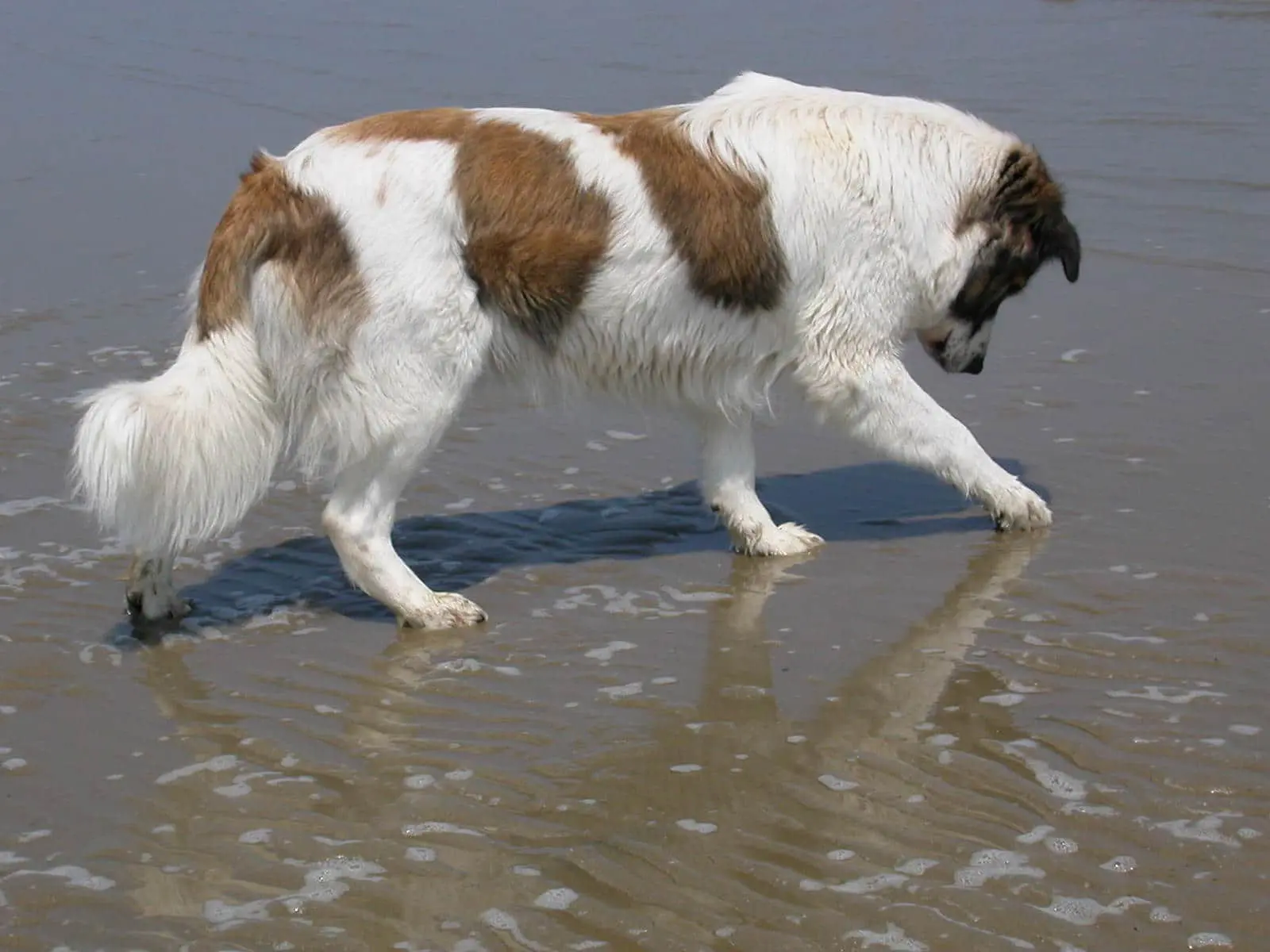
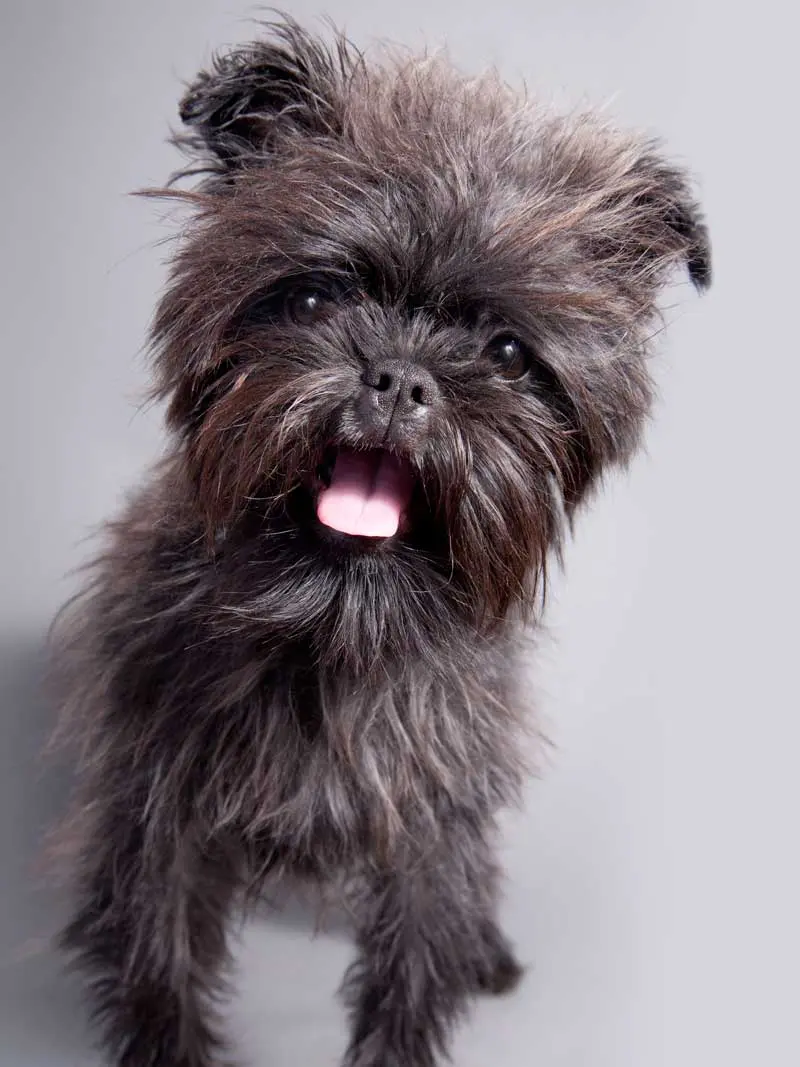
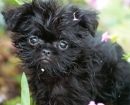
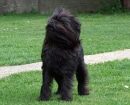
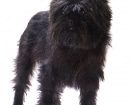
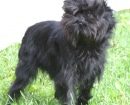
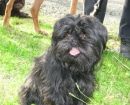



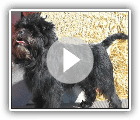
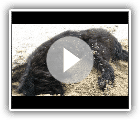
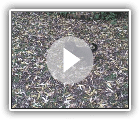
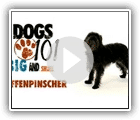
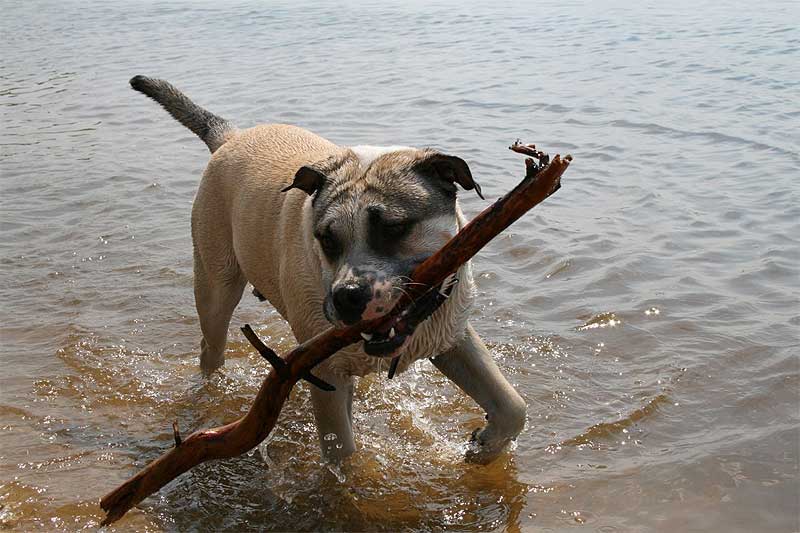
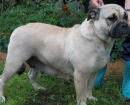
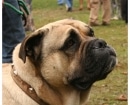

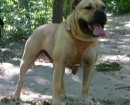
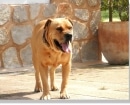
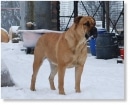

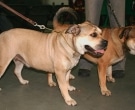
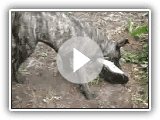 CA De Bou Perro Presa Mallorquin
CA De Bou Perro Presa Mallorquin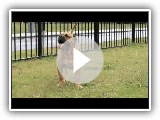 CA de Bou running
CA de Bou running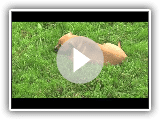 Coconut – Majorca Mastiff (Mallorquin Mastiff dog)
Coconut – Majorca Mastiff (Mallorquin Mastiff dog)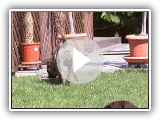 CA De Bou dog Dogo Mallorquin oder sind abzugeben
CA De Bou dog Dogo Mallorquin oder sind abzugeben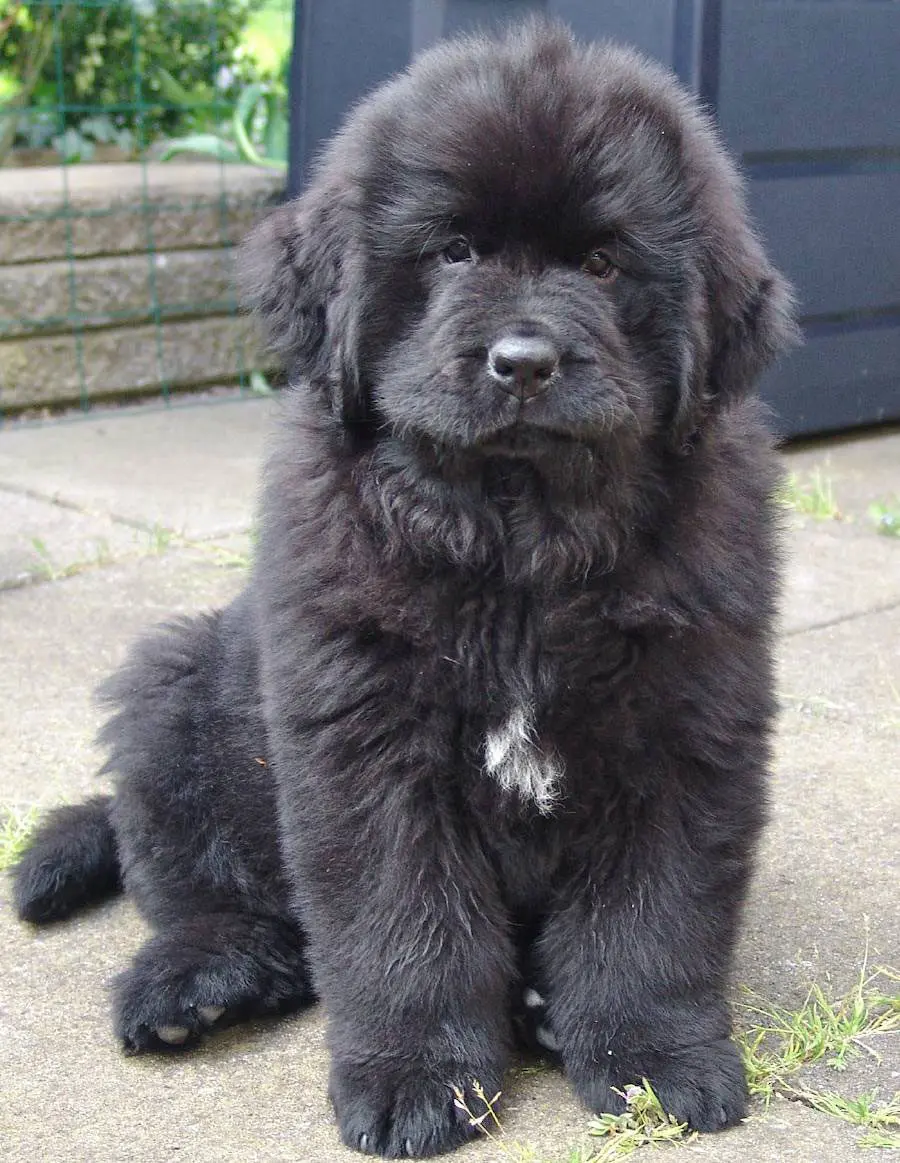

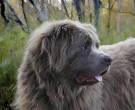
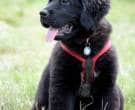
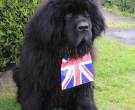
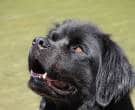

 Dogs 101: Newfoundland
Dogs 101: Newfoundland NEWFOUNDLAND DOG – Profile of a Hero Breed
NEWFOUNDLAND DOG – Profile of a Hero Breed Newfoundland 101! Everything You Need To Know About Owning A Newfoundland Puppy
Newfoundland 101! Everything You Need To Know About Owning A Newfoundland Puppy NEWFOUNDLAND FIVE THINGS YOU SHOULD KNOW
NEWFOUNDLAND FIVE THINGS YOU SHOULD KNOW The Newfoundland dog – GIANT dog breeds
The Newfoundland dog – GIANT dog breeds The Newfoundland characteristics of the breed, care etc.
The Newfoundland characteristics of the breed, care etc. Newfoundland: The noblest and sweetest dog in the world
Newfoundland: The noblest and sweetest dog in the world Newfoundland puppies
Newfoundland puppies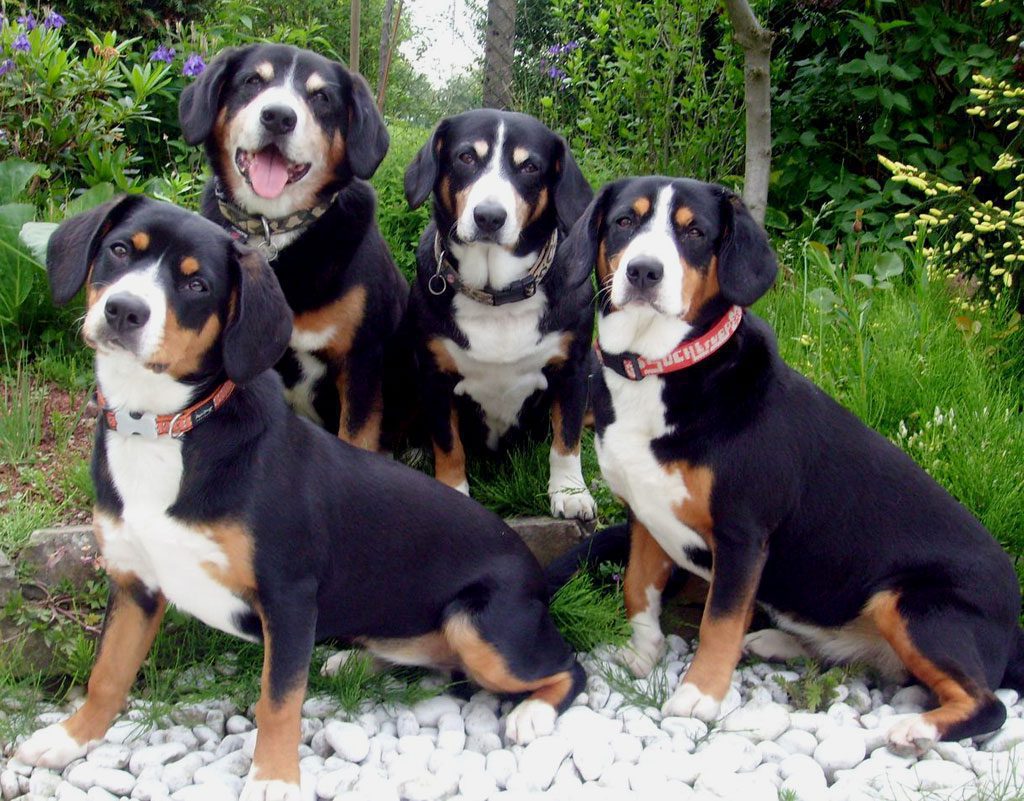
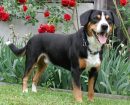

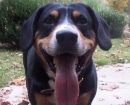
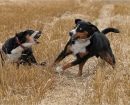
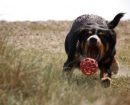
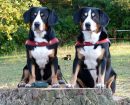
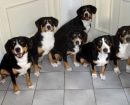
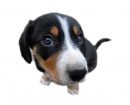
 Entlebucher Mountain Dog / Entlebucher Sennenhund: Happy to visit 2. Birthday
Entlebucher Mountain Dog / Entlebucher Sennenhund: Happy to visit 2. Birthday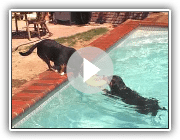 Entlebucher pool party
Entlebucher pool party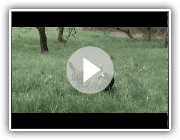 Entlebucher action
Entlebucher action Entlebucher Sennenhund Yanni
Entlebucher Sennenhund Yanni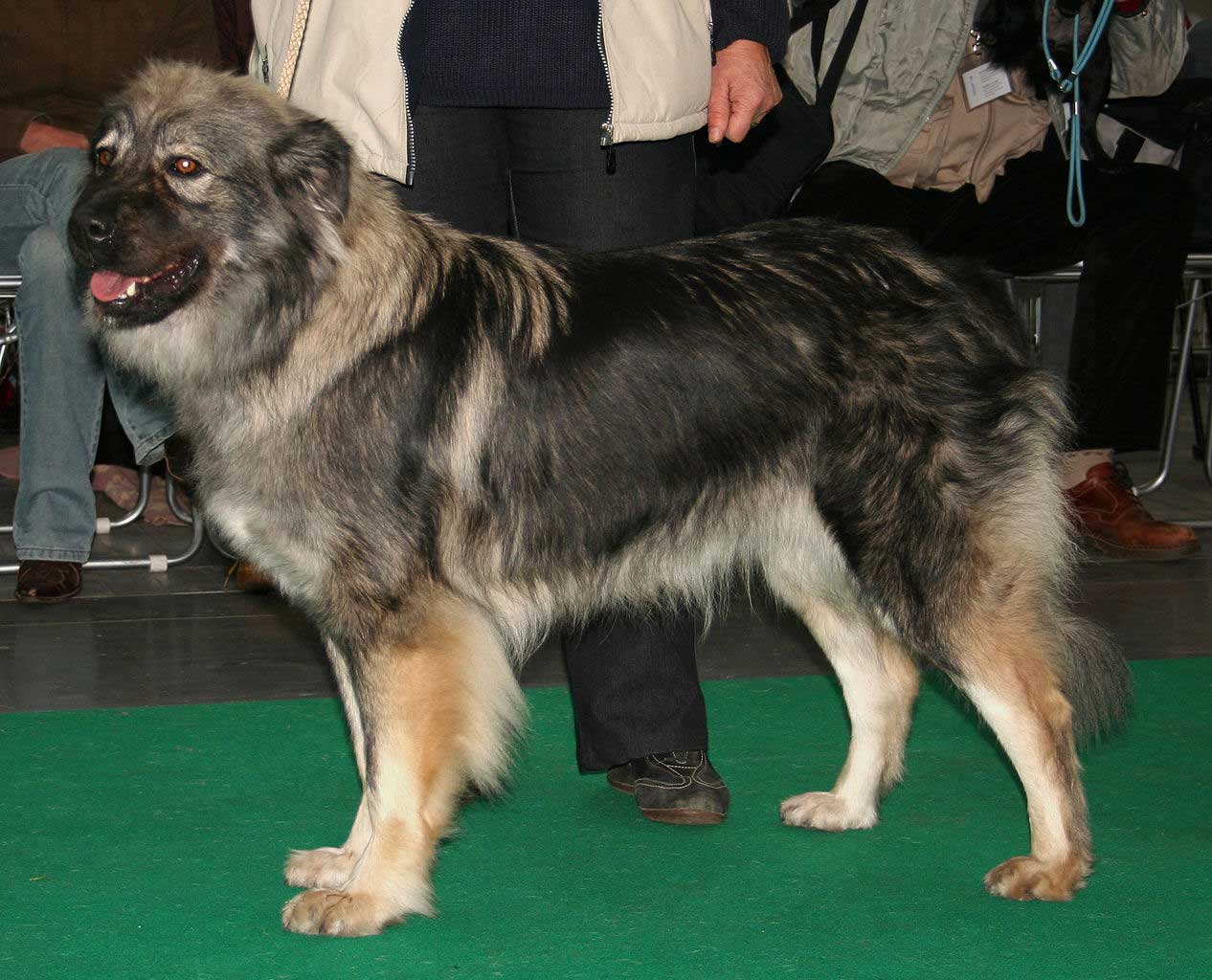
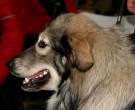

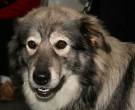
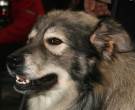
 Karst Shepherd Dog
Karst Shepherd Dog Crack an egg / Karst Shepherd: A day at the show
Crack an egg / Karst Shepherd: A day at the show Karst Shepherd / Karst Shepherd Dog / Breed of dog / Dog Breed
Karst Shepherd / Karst Shepherd Dog / Breed of dog / Dog Breed Karst Shepherd’s Training
Karst Shepherd’s Training
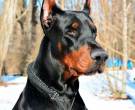

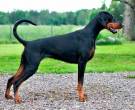
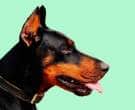
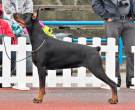
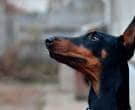
 8 Things you didn't know about the DOBERMANN PINSCHER | Anime&Tops
8 Things you didn't know about the DOBERMANN PINSCHER | Anime&Tops Basic training Dobermann class 1
Basic training Dobermann class 1 Do You Want a DOBERMAN? Check This!!
Do You Want a DOBERMAN? Check This!! BEST OF DOBERMAN | THE SUPER INTELLIGENT DOG
BEST OF DOBERMAN | THE SUPER INTELLIGENT DOG
